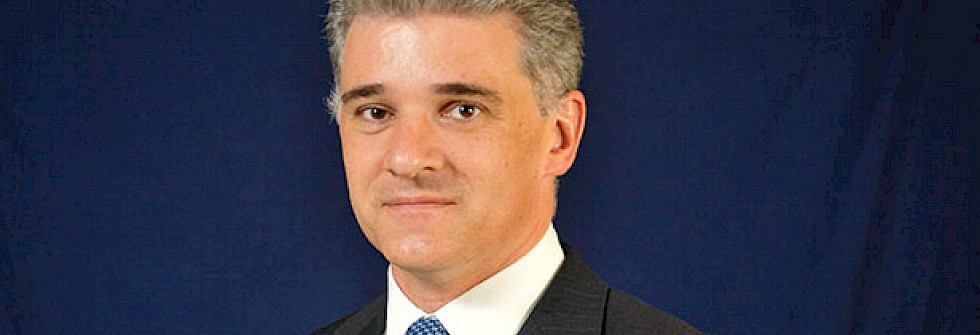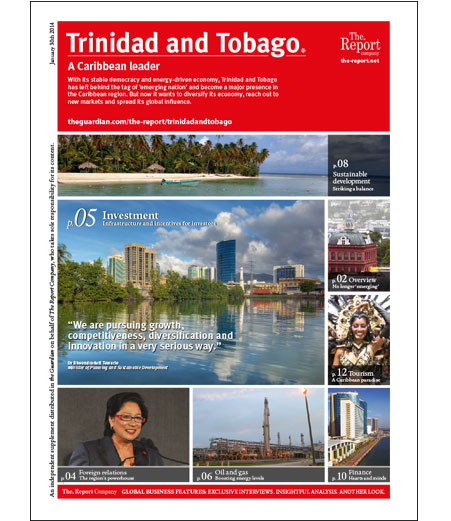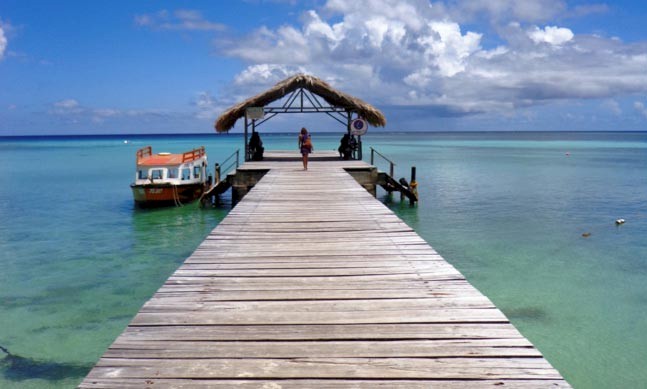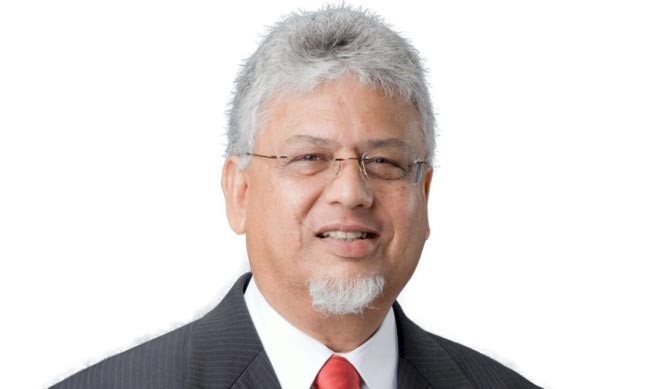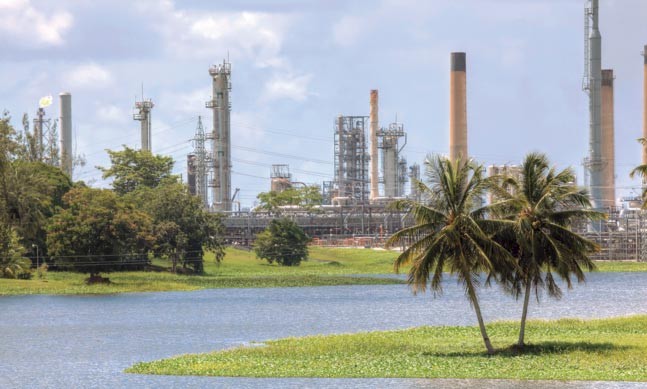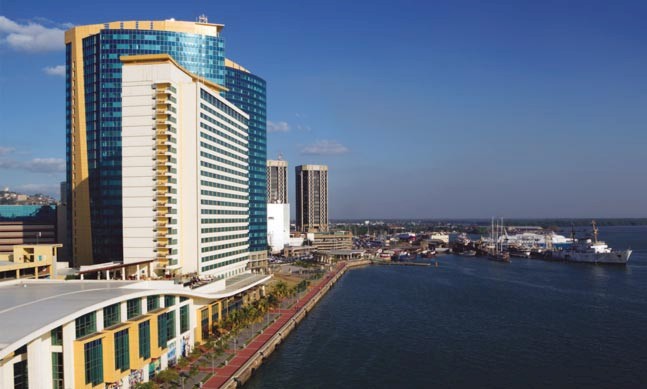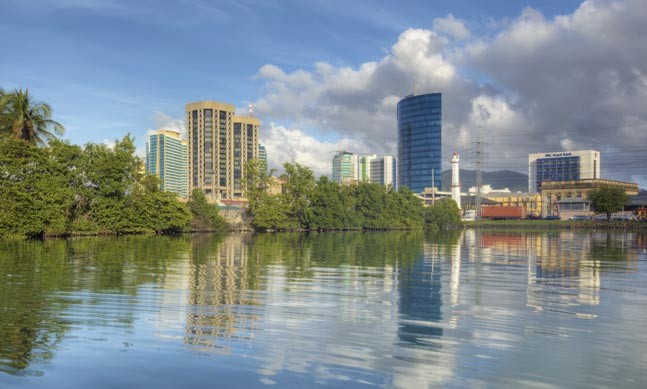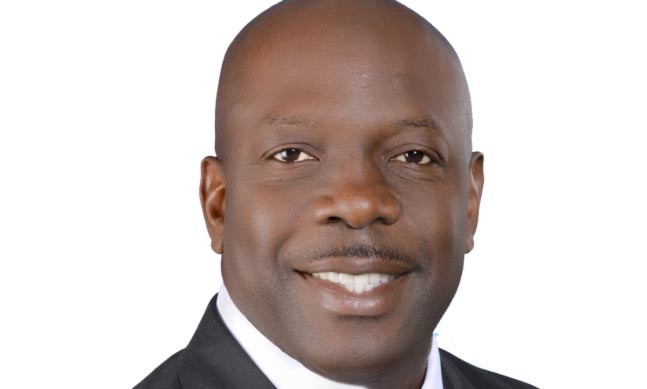The Energy Chamber is the representative business association for the Trinidad and Tobago energy sector. Its strategic mandate centres on promoting the country as a favourable investment destination as well as marketing the expertise of local service companies to diverse international markets. The Chamber’s CEO, Thackwray Driver, spoke to The Report Company about the current status of the country’s energy sector, including the opportunities for renewable energy development.
The Report Company: How would you appraise the current dynamics in Trinidad and Tobago’s energy sector?
Thackwray Driver: We have a very long history in the energy sector with over a century of commercial oil production which puts us amongst some of the oldest oil provinces in the world. Trinidad ties with Azerbaijan as the second oldest oil province after the US, so there’s a lot of expertise that runs very deep in the country.
Oil production has been on a downward trend since the early 1980s, but natural gas really ballooned in the mid-1990s to 2008 and a huge amount of investment took place. In order to maintain gas production at the very high plateau that we’re now on we need huge amounts of continued investment, particularly upstream offshore in continuing gas production. We’ve gone through a phase where there was a focus on expansion: downstream with the petrochemicals facilities, midstream with LNG and the natural gas liquids project and upstream. Now we’re in a phase where the downstream portion of the industry is no longer expanding, the LNG is no longer expanding but for the gas production to continue, you have to continue investing.
We went through a rough patch of under-investment in 2008, 2009 and 2010 where there was not enough investment going into the upstream gas industry. The result of that really came in 2010, 2011 and 2012 and continuing into this year with curtailments in gas delivery to Point Lisas and to LNG which has had a negative impact on the country’s GDP.
We are now beginning to see the investment going in but there are still a number of issues which have to be sorted out in order to be sure that we can maintain stable gas production to fuel this world-class industry which we have developed.
TRC: In terms of exploration, are there any new areas that are yet to be developed?
TD: There’s still a lot of oil onshore which will go on for a long time. We have enhanced our recovery techniques, but the next frontier for development is to go to the deeper waters off Trinidad’s east coast going down into the Atlantic. In that acreage we’ve had two big rounds in the last two years, both fairly successful, with blocks being taken by BP and BHP Billiton. Another big round will be closing on 31st January 2014 and that’s another six blocks on offer.
TRC: How do you think the development of shale gas in the US might affect the industry in Trinidad?
TD: It’s already affecting the industry in a number of ways. It makes investors think twice about potential investments in Trinidad in the gas processing industry because they feel that they may be able to access cheap gas in the US and their product then is closer to their main markets. Our worry is losing investment dollars to the US shale gas petrochemicals sector.
The other thing that shale gas does is that it consumes lots of inputs. A lot of skilled people and equipment and expertise gets sucked into the US and that has resulted in a lot of oilfield related service costs going up. That’s a difficult thing to manage. The other impact we have seen is that the obviously the market in the US becomes a lot less attractive for LNG so energy exports are not going to the US anymore; they’re going to Asia, they’re going to South America and they’re going to Europe.
Our exports from Trinidad which used to almost go 100 percent to the US market now go to Argentina, Brazil, and Spain, the UK, Japan, China, Taiwan, Korea and all the Asian gas markets. The potential impact now is we have to start competing with US exports of LNG which are going to come in the next few years. We have a lot of advantages in that the capital cost of building a new energy facility has skyrocketed since we built our energy facility which means we have an automatic price advantage.
“Our exports from Trinidad which used to almost go 100 percent to the US market now go to Argentina, Brazil, and Spain, the UK, Japan, China, Taiwan, Korea and all the Asian gas markets.”Tweet This
Everything suggests that there will be a continuing global inability to meet the demand for gas, particularly in Asia, so there is still a lot of opportunity to continue to export LNG even with the US terminals coming in. It’s not all doom and gloom.
TRC: What kind of input has the chamber had in terms of policy making for the energy sector?
TD: The energy chamber is a very important body in relations between government and industry and also between upstream companies, gas producers and the downstream consumers.
Our role is to lobby the government on behalf of our membership and we do so primarily with the ministry of energy but also with the ministry of finance. We have a very close relationship with the two ministries. There’s a continuous dialogue.
When we need to have an industry-wide view to include all the stakeholders, we try to package it together into a position to take to the government.
TRC: In what kind of areas has the Energy Chamber been active?
TD: The major focus of our advocacy issues over the last six or seven years covers two major advocacy areas. The first would be in terms of fiscal reform. We had some significant success in that area and there have been a number of changes made where the government has incentivised drilling. As a result, the activity in the country has really spiked up so there’s a direct line of sight between our lobby efforts and the activity levels.
The other major area is in terms of local content, looking at measures to promote and build the capacity of our local service contractors and strengthen their ability to win business with the international operators.
TRC: What is the relationship of Trinidad and Tobago’s energy sector with CARICOM?
TD: There are different levels of relationships. At the private sector level, Trinidad acts as a hub for engineering skills, project management skills and equipment. Trinidad acts as the staging post for services going to places like Suriname.
In terms of governmental policy, things have been slow to develop with the region’s common energy policy. There was a document signed this year which is a step in the right direction. One of the problems has been that the region has to find a way of weaning itself from fossil fuels. It’s very difficult to do that with very small islands. You have to find a way of interconnecting the grids and the region doesn’t seem to be able to fully find its way through that.
TRC: What opportunities are there for renewable energy development in Trinidad and Tobago?
TD: I think that the opportunities for renewable energy within the Caribbean don’t rest so much within Trinidad. They rest using Trinidadian expertise and engineering skills within the high energy cost markets in the rest of the region. It’s very difficult to make a renewable energy project pay in Trinidad when you have very cheap energy; the economics don’t work out.
Our focus within Trinidad has been to promote energy efficiency, to make sure we are using our resources efficiently, particularly within the petrochemical sector, where changes there can have very major impacts on Trinidad’s carbon footprint.
“We are now beginning to see the investment going in but there are still a number of issues which have to be sorted out in order to be sure that we can maintain stable gas production to fuel this world-class industry which we have developed.”Tweet This
TRC: How does the energy sector manage its relationships with the communities in which it operates?
TD: Our companies have developed pretty good community engagement strategies. Because of the long history of the sector, it’s not as people have suddenly had an industry dropped on them; they’ve grown up with it, they know it, their grandfather worked in it, so there is an acceptance and a sense of ownership of the industry.
TRC: How would you appraise the availability of appropriate human resources in the country?
TD: The challenge we are faced with is that we do have a lot of qualified people but a lot of them are not in Trinidad because when we had a downturn in 2008 they were offered jobs all over the world and a lot of them left. Getting these people back is difficult. We need to see that not as a challenge but as an opportunity to train more people to fill the roles.
TRC: What impact do crime levels have on the energy sector?
TD: There is probably a limited direct impact on the energy sector from the crime situation in that I don’t think it’s really scared off any investment. All of the places where you are measuring up against might have similar if not worse problems.
TRC: What are your priorities for the future?
TD: We have some projects we have been working on over the last few years. My main priority is to make sure that those are fully implemented and adopted across the industry. We have Safe to Work, which is a certification programme for all contractors and service companies that operate in Trinidad and Tobago to operate with the major companies. We are working on getting everyone certified against that requirement. The deadline is the 31st December 2013 where it’s agreed that the mandatory requirement for all high risk contractors to be certified. There are probably about 300-400 companies who meet that standard and we have about 170 certified at the moment so there’s still a gap to close.
In terms of developing the chamber further, there’s more we can be doing with training the workforce at the technical level. We have a learning centre where every single person who enters any of the facilities has to undergo a basic health and safety assessment.
With regard to the longer term view for the energy sector of the country, a lot of that work is around diversifying our energy sector and moving away from just exporting a few commodities to us exporting services. We have done a lot of work on that in the last few years but we need to continue to ensure that we are working on having our service companies and contractors become globally competitive companies who can work everywhere. The work we have to do is to put them in that position and help them find the macro opportunities.
We have been taking them on a lot of trade missions and that’s something we need to continue to do. We have had some success; some of our service companies are now internationalising and are able to work globally. Our target markets will be firstly within the region, Surinam is a major market, we’ve been there repeatedly, and then outside the region the next major export destination which we’ve been trying to break into is Africa, particularly Ghana and Nigeria and then Tanzania, Uganda and Kenya.
We are also thinking about the US as an export market for us for services because they don’t have all the expertise. Trinidad is a small country. We don’t need big opportunities; we need niche opportunities which we can go for. Our small size and being English-speaking is very useful.


